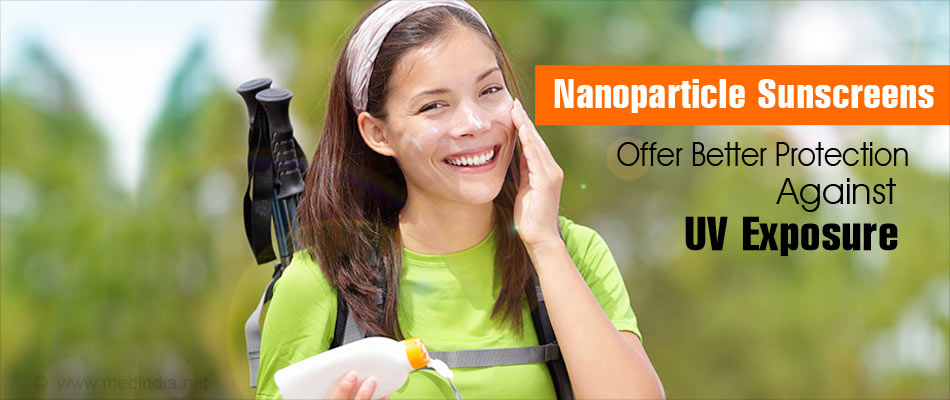
- Nanoparticle sunscreens are highly effective but feared due to potential cytotoxicity and free radical damage.
- The benefits actually outweigh the perceived risks, which have no scientific evidence, according to the latest review.
- Nano-sunscreens not only prevent skin damage by UV light exposure but are also hypoallergenic and non-irritant in nature.
Nanoparticles do not Penetrate the Skin in Significant Amounts
Australia has the highest incidence of melanomas and other skin cancers, hence effective sun protection is highly important. Associate Professor Paul Wright of RMIT University in Melbourne emphasizes that the exposure situation of nanoparticles on the skin and the coated stainless steel is different. "Here they are formulated to remain on the skin's surface, which is constantly shedding its outer layer of dead cells."The premise that nanoparticles do not penetrate the skin in significant amounts is supported by a study conducted by an Australian researcher Gulson and his team in 2010. The team tested the penetration of zinc oxide particles of 19 nanometers and 110 nanometers on volunteers. Nano-sunscreens containing these particles were applied twice a day for 5 days. The results showed that less than 0.01% of either of the two forms entered the stratum corneum, the outermost layer of the skin.
The amount of zinc absorbed was not different even when either conventional or nanoparticle sunscreens were used. The tiny amount absorbed in either case was very small when compared to the amount of zinc required by the human body.
In 2013, another study was conducted by Commonwealth Scientific and Industrial Research Organization (CSIRO) on the skin of hairless mice, which is thinner than human skin. The penetration of both nanoparticle and bulk zinc containing sunscreens was investigated. The researchers found that zinc absorbed was distributed throughout but a homeostasis was maintained as there was no change found in the zinc concentration of blood and internal organs.
Nanoparticles do not Cause Free Radical Damage
There are fears of cytotoxicity due to photocatalytic properties of titanium oxide and zinc oxide. Studying the effects of zinc oxide and rutile titanium oxide (the less photo-active form of titanium oxide used in sunscreens) nanoparticles demonstrated that these particles are tolerated as well as conventional sunscreens in human cell test systems. Synchrotron X-ray fluorescence demonstrated that human immune cells break down nanoparticles and thus the body can handle such particles. Moreover, cytotoxicity occurs only at very high doses when they penetrate the skin. The sunscreen formulations hardly enter the skin.The fear of free radical damage due to nanoparticles is also ill-founded as it is observed that zinc oxide and rutile titanium oxide nanoparticles directly reduce the amount of free radicals in human immune cells on exposure to UV-A wavelengths of sunlight.
Nano-sunscreens Offer Better Protection
Nanoparticle-containing sunscreens are more effective in protection against harmful UV rays and melanomas as nanoparticles have a better ability to attenuate UV rays than bulk material (more than 100 nanometers in diameter) on a per weight comparison.The review, therefore, emphasized that the benefits of using nanoparticle sunscreens outweigh the perceived risks by far. Moreover, the risks have not been substantiated by any scientific evidence. There is one concern, though. The harmful effects of nanoparticle are avoided as they do not penetrate the skin in significant amounts through sunscreens. However, the use of spray-on sunscreens containing nanoparticles may cause inhalation and entry of nanoparticles into the bloodstream. The potential risks due to such exposure have not been studied extensively. It is therefore suggested to avoid the use of spray-on sunscreens and loosed powder compacts containing nanoparticles.
The present available research data and the latest review clearly demonstrate that the dangers of ultraviolet light including the risk of melanoma (skin cancer) are much more serious than any potential risk associated with nanoparticle sunscreens. The highly effective sunscreens must continue to be a part of sun protection measures.
References:
- Potential risks and benefits of nanotechnology: perception of risks in sunscreens, Paul FA Wright, Medical Journal of Australia 2016; 204 (10); 369-370
- Nanoparticles in Sunscreens
https://www.ewg.org/sunscreen/report/nanoparticles-in-sunscreen/









